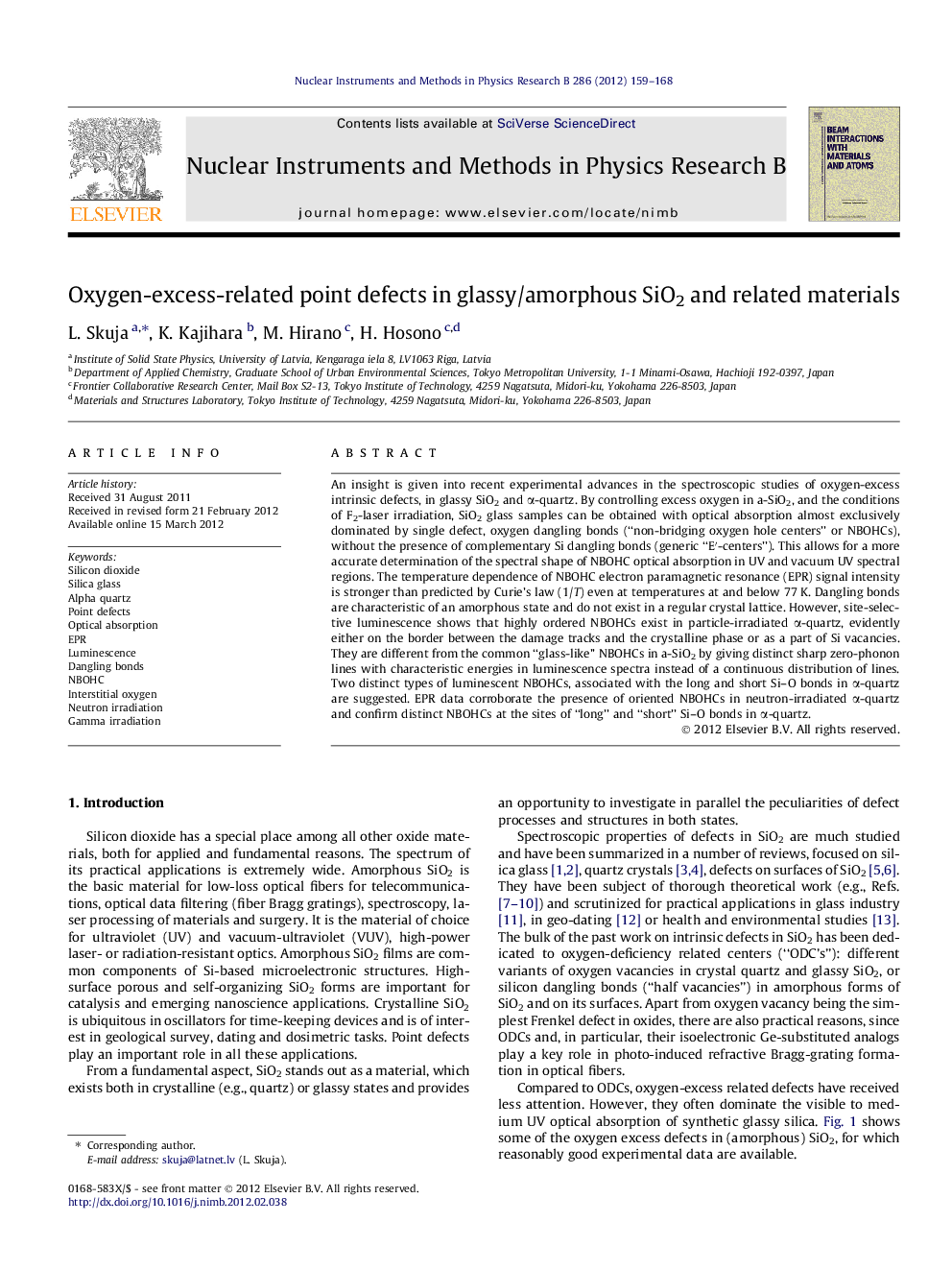| Article ID | Journal | Published Year | Pages | File Type |
|---|---|---|---|---|
| 1681870 | Nuclear Instruments and Methods in Physics Research Section B: Beam Interactions with Materials and Atoms | 2012 | 10 Pages |
An insight is given into recent experimental advances in the spectroscopic studies of oxygen-excess intrinsic defects, in glassy SiO2 and α-quartz. By controlling excess oxygen in a-SiO2, and the conditions of F2-laser irradiation, SiO2 glass samples can be obtained with optical absorption almost exclusively dominated by single defect, oxygen dangling bonds (“non-bridging oxygen hole centers” or NBOHCs), without the presence of complementary Si dangling bonds (generic “E′-centers”). This allows for a more accurate determination of the spectral shape of NBOHC optical absorption in UV and vacuum UV spectral regions. The temperature dependence of NBOHC electron paramagnetic resonance (EPR) signal intensity is stronger than predicted by Curie’s law (1/T) even at temperatures at and below 77 K. Dangling bonds are characteristic of an amorphous state and do not exist in a regular crystal lattice. However, site-selective luminescence shows that highly ordered NBOHCs exist in particle-irradiated α-quartz, evidently either on the border between the damage tracks and the crystalline phase or as a part of Si vacancies. They are different from the common “glass-like” NBOHCs in a-SiO2 by giving distinct sharp zero-phonon lines with characteristic energies in luminescence spectra instead of a continuous distribution of lines. Two distinct types of luminescent NBOHCs, associated with the long and short Si–O bonds in α-quartz are suggested. EPR data corroborate the presence of oriented NBOHCs in neutron-irradiated α-quartz and confirm distinct NBOHCs at the sites of “long” and “short” Si–O bonds in α-quartz.
